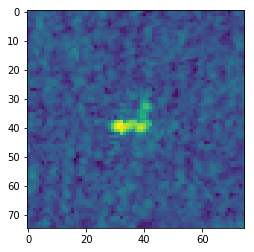0%| | 0/81 [00:00<?, ?it/s]
KeyError Traceback (most recent call last)
in ()
4 tfms = tfms_from_model(arch, sz, aug_tfms=transforms_top_down, max_zoom=1.05)
5 data = ImageClassifierData.from_arrays(PATH, trn = (x_train, y_train), val = (x_val, y_val), tfms = tfms , bs = bs, classes = 2, test = X_test)
----> 6 learn = ConvLearner.pretrained(arch, data, precompute=True)
~/fastai/courses/dl1/fastai/conv_learner.py in pretrained(cls, f, data, ps, xtra_fc, xtra_cut, custom_head, precompute, pretrained, **kwargs)
112 models = ConvnetBuilder(f, data.c, data.is_multi, data.is_reg,
113 ps=ps, xtra_fc=xtra_fc, xtra_cut=xtra_cut, custom_head=custom_head, pretrained=pretrained)
–> 114 return cls(data, models, precompute, **kwargs)
115
116 @classmethod
~/fastai/courses/dl1/fastai/conv_learner.py in init(self, data, models, precompute, **kwargs)
98 if hasattr(data, ‘is_multi’) and not data.is_reg and self.metrics is None:
99 self.metrics = [accuracy_thresh(0.5)] if self.data.is_multi else [accuracy]
–> 100 if precompute: self.save_fc1()
101 self.freeze()
102 self.precompute = precompute
~/fastai/courses/dl1/fastai/conv_learner.py in save_fc1(self)
166 m=self.models.top_model
167 if len(self.activations[0])!=len(self.data.trn_ds):
–> 168 predict_to_bcolz(m, self.data.fix_dl, act)
169 if len(self.activations[1])!=len(self.data.val_ds):
170 predict_to_bcolz(m, self.data.val_dl, val_act)
~/fastai/courses/dl1/fastai/model.py in predict_to_bcolz(m, gen, arr, workers)
15 lock=threading.Lock()
16 m.eval()
—> 17 for x,*_ in tqdm(gen):
18 y = to_np(m(VV(x)).data)
19 with lock:
~/anaconda3/envs/fastai/lib/python3.6/site-packages/tqdm/_tqdm.py in iter(self)
895 “”", fp_write=getattr(self.fp, ‘write’, sys.stderr.write))
896
–> 897 for obj in iterable:
898 yield obj
899 # Update and possibly print the progressbar.
~/fastai/courses/dl1/fastai/dataloader.py in iter(self)
86 # avoid py3.6 issue where queue is infinite and can result in memory exhaustion
87 for c in chunk_iter(iter(self.batch_sampler), self.num_workers*10):
—> 88 for batch in e.map(self.get_batch, c):
89 yield get_tensor(batch, self.pin_memory, self.half)
90
~/anaconda3/envs/fastai/lib/python3.6/concurrent/futures/_base.py in result_iterator()
584 # Careful not to keep a reference to the popped future
585 if timeout is None:
–> 586 yield fs.pop().result()
587 else:
588 yield fs.pop().result(end_time - time.time())
~/anaconda3/envs/fastai/lib/python3.6/concurrent/futures/_base.py in result(self, timeout)
423 raise CancelledError()
424 elif self._state == FINISHED:
–> 425 return self.__get_result()
426
427 self._condition.wait(timeout)
~/anaconda3/envs/fastai/lib/python3.6/concurrent/futures/_base.py in __get_result(self)
382 def __get_result(self):
383 if self._exception:
–> 384 raise self._exception
385 else:
386 return self._result
~/anaconda3/envs/fastai/lib/python3.6/concurrent/futures/thread.py in run(self)
54
55 try:
—> 56 result = self.fn(*self.args, **self.kwargs)
57 except BaseException as exc:
58 self.future.set_exception(exc)
~/fastai/courses/dl1/fastai/dataloader.py in get_batch(self, indices)
73
74 def get_batch(self, indices):
—> 75 res = self.np_collate([self.dataset[i] for i in indices])
76 if self.transpose: res[0] = res[0].T
77 if self.transpose_y: res[1] = res[1].T
~/fastai/courses/dl1/fastai/dataloader.py in (.0)
73
74 def get_batch(self, indices):
—> 75 res = self.np_collate([self.dataset[i] for i in indices])
76 if self.transpose: res[0] = res[0].T
77 if self.transpose_y: res[1] = res[1].T
~/fastai/courses/dl1/fastai/dataset.py in getitem(self, idx)
165 xs,ys = zip(*[self.get1item(i) for i in range(*idx.indices(self.n))])
166 return np.stack(xs),ys
–> 167 return self.get1item(idx)
168
169 def len(self): return self.n
~/fastai/courses/dl1/fastai/dataset.py in get1item(self, idx)
158
159 def get1item(self, idx):
–> 160 x,y = self.get_x(idx),self.get_y(idx)
161 return self.get(self.transform, x, y)
162
~/fastai/courses/dl1/fastai/dataset.py in get_y(self, i)
289 class ArraysIndexDataset(ArraysDataset):
290 def get_c(self): return int(self.y.max())+1
–> 291 def get_y(self, i): return self.y[i]
292
293
~/anaconda3/envs/fastai/lib/python3.6/site-packages/pandas/core/series.py in getitem(self, key)
621 key = com._apply_if_callable(key, self)
622 try:
–> 623 result = self.index.get_value(self, key)
624
625 if not is_scalar(result):
~/anaconda3/envs/fastai/lib/python3.6/site-packages/pandas/core/indexes/base.py in get_value(self, series, key)
2558 try:
2559 return self._engine.get_value(s, k,
-> 2560 tz=getattr(series.dtype, ‘tz’, None))
2561 except KeyError as e1:
2562 if len(self) > 0 and self.inferred_type in [‘integer’, ‘boolean’]:
pandas/_libs/index.pyx in pandas._libs.index.IndexEngine.get_value()
pandas/_libs/index.pyx in pandas._libs.index.IndexEngine.get_value()
pandas/_libs/index.pyx in pandas._libs.index.IndexEngine.get_loc()
